Lofty Lushan Mountain
Temples in Hidden Places
On the First of August
Wheels by the Water
Share your travel story with regional@chinadaily.com.cn
Wuyuan
( China Today )
Updated: 2011-09-07
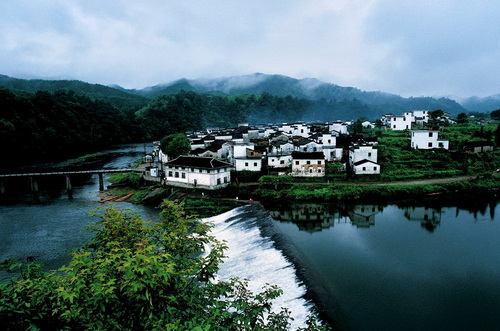 |
| Wuyuan is deemed the most beautiful countryside of China. |
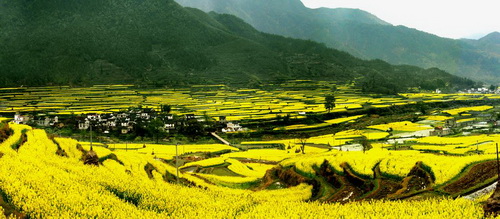 |
| Wuyuan,the most beautiful countryside of China |
Wuyuan has become a massively popular destination with domestic tourists in the past few years, but as it's such a large area, it's easy enough to escape the crowds with a little bit of determination. Most of Wuyuan's villages are linked by timeworn postal roads that today provide hikers with the perfect excuse to explore the area's gorgeous backcountry: imagine wild azalea, wisteria, and rape flower blooms dotting steep hills cut by cascading streams and you're off to the right start.
In ancient times, Wuyuan was governed by Anhui. Merchants from this area spread throughout China around 500 years ago, forging trade relations with dealers from Qingdao to Qinghai. Such were their numbers and business acumen that in some areas, they practically ran the local economy. Historical records show that of the eight barons Qing Dynasty Emperor Qianlong received during a trip to southern China, four were from Anhui. Anhui merchants went on to dominate trade in China for some 400 years in terms of capital and trade outlets.
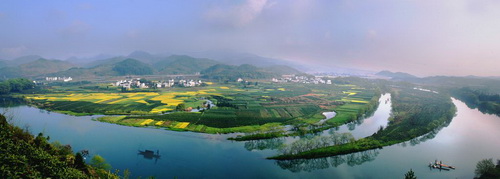 |
| Wuyuan,the most beautiful countryside of China |
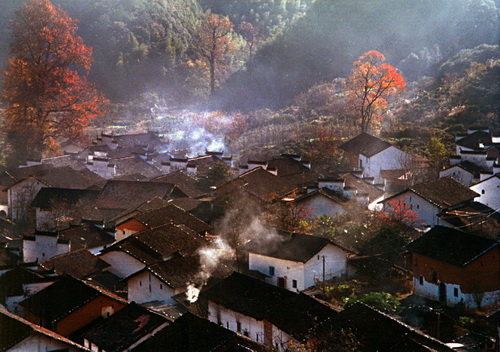 |
| Wuyuan,the most beautiful countryside of China |
Back in their hometowns, these wealthy merchants would often construct majestic homes and elaborate ancestral temples so their families and forefathers could share in their success. Many of these still stand in Wuyuan. Hidden deep in the mountains, the town escaped the wartime devastation that obliterated many other parts of ancient China, and it remains in its original state today.
 |
| Wuyuan,the most beautiful countryside of China |
The village of Sixi has been home to the Yu clan for generations. Its distinct Anhui architectures house many fine carvings and other ancient trinkets. The most impressive house in the village is the Jingxu (Respecting Order) Hall, the grand abode of an esteemed and wealthy family. The fourth generation of that family still resides there. The residential buildings in Sixi are under government protection. The occupants are permitted to live there, but, to the disappointment of many collectors, they cannot sell any of the old relics.
The locals carry out their daily activities amid this ancient setting. Some work on dough, others are busy washing clothes, while the elderly relax with a cigarette and enjoy their favorite TV shows. These days, tourists are no strange sight in Sixi. They can often be seen sharing a meal with the hospitable locals.
 |
|
The locals carry out their daily activities amid this ancient setting. |
 |
|
Some work on dough, others are busy washing clothes, while the elderly relax with a cigarette and enjoy their favorite TV shows. |
Also in Sixi is the "Picture of 100 Longevities," a compound where the Chinese character for longevity is depicted 100 times. Ninety-six of the characters are carved on the door -- the other four are hidden, and the challenge for visitors is to locate them. We found three, but could not see the last one. The owner of the house told us that the layout of the residence resembles the Chinese character for longrity.
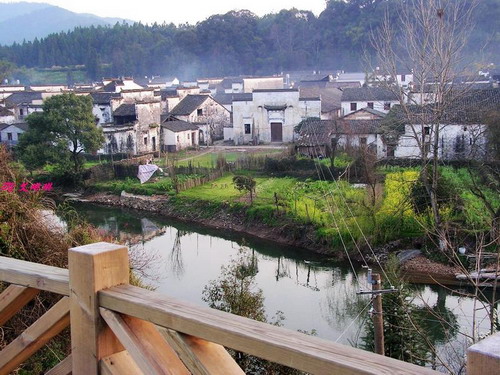 |
| The village of Sixi |
Likeng village is a cluster of houses built along a brook, and is said to be the town's most scenically beautiful village. The brook is two to three meters wide, and spanned at various points by makeshift bridges. Dogs are often seen lounging around on the bridges, watching the tourists pass by.
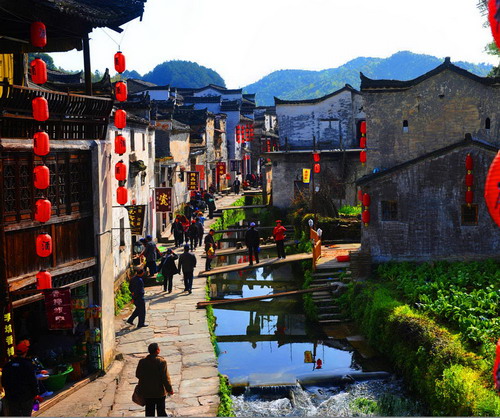 |
|
Likeng village is a cluster of houses built along a brook, and is said to be the town's most scenically beautiful village. |




